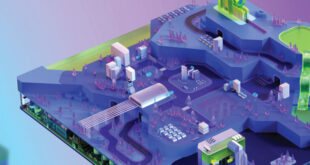Why did you choose Unity for The Room Two?
The original reason we chose Unity is that it’s great for small teams – especially on the coding side. You can make a huge amount of progress in a very short time, whereas most other engines would have bogged you down trying to get the basics working. It’s not that it necessarily lets us do things that other engines don’t, it’s that it lets us do them quicker, easier and with less hair pulled out along the way.
Originally, we were a two-man team amazed by Unity’s ability to let us quickly prototype ideas. By the end of TRT, we were a studio of 15, impressed with how easily it scales up to a full production environment.
Why is Unity suited to smart devices?
Unity’s great for doing mobile in a few ways. It does a good job of hiding the differences between platforms, so if you’re developing on PC, there won’t be too many surprises when you run it on mobile. Likewise, it hides a lot of the differences between Android and iOS development, so although doing a great conversion is still a big job, Unity takes a lot of the pain out of it, and it mostly comes down to making sure your assets are appropriate for your target platform.
From a development perspective, how have you improved on the original?
We’d like to think we improved pretty much all of it. The Room was our first game for mobile, so we learned a huge amount during development that we applied in the sequel. We had a much better understanding of where the performance problems are on mobile, and so were able to make a better looking game that still ran at pretty much the same speed. The bigger team that we had on The Room Two allowed us to add more polish, so better VFX, fuller environments, cloud saving and so on. It’s generally much slicker.
Which Unity features were most helpful?
The great thing about Unity is how well it all fits together as a package. Virtually all of the features are well thought out, well presented and thoroughly documented. There’s no one stand-out feature – you’re buying a complete game creation package. In the rare cases where something’s missing, Unity’s community has usually provided a solution on the Asset Store.
Which features needed improving?
In any piece of software as big as Unity, there’s going to be the odd niggle. The animation system certainly has a few irritating quirks, and the particle system probably doesn’t quite match up to some of the competition. The lack of a good built-in UI system has been a problem in the past, but that’s going to be put right very soon.
The recent announcement of Unity 5, with the new lighting and shader systems, looks like it’ll really help make our games shine.
What was the biggest lesson you learned about using Unity during the development of The Room Two?
Use the Asset Store. As well as a tonne of art assets, it’s got a huge amount of extensions for Unity, which can really make your life easier during production. In general, if you’re writing some code, thinking ‘surely loads of people have had to write this’, then there’s almost always a solution already available for a few dollars.
Would you recommend Unity to others?
Absolutely, I do exactly that on a regular basis. There’s no question in my mind that Unity is the only engine that would have allowed us to make The Room and The Room Two as quickly, painlessly and to as high a standard as we did.

 MCV/DEVELOP News, events, research and jobs from the games industry
MCV/DEVELOP News, events, research and jobs from the games industry



